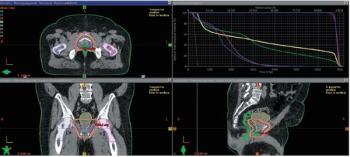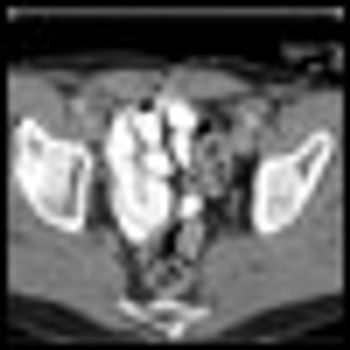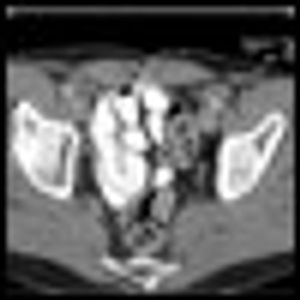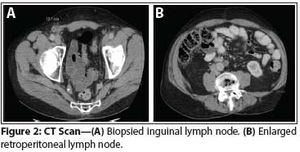
A 62-year-old man with prostate adenocarcinoma elected to proceed with radical prostatectomy as definitive management. After his pathology report showed stage IIIB disease, he elected for observation. What happened next?

Your AI-Trained Oncology Knowledge Connection!


A 62-year-old man with prostate adenocarcinoma elected to proceed with radical prostatectomy as definitive management. After his pathology report showed stage IIIB disease, he elected for observation. What happened next?

At worst radical prostatectomy is equal to radiation therapy in operable very-high-risk prostate cancer, and there are accumulating data to suggest that a surgery-first approach is better induction for multimodal therapy.

A 70-year-old, otherwise healthy man presented to his primary care provider for an annual checkup, at which time a nontender right testicular mass was noted. He denied any symptoms, and his serum alpha-fetoprotein and beta-human chorionic gonadotropin levels were normal.

Cisplatin-based chemotherapy has transformed the prognosis of testicular germ cell cancer (GCT). It has converted the chief mortal malignancy in younger men into a model for the curability of cancer.

We fervently hope that all surgeons will participate in a comparative outcomes project for the purpose of quality improvement. However, today we will settle for one, we hope, skilled surgeon, open or robotic.

The patient is a 39-year-old man who presents with pelvic lymphadenopathy. He has a history of ureteral reflux disease, recurrent nephrolithiasis, right nephrectomy, ileal loop diversion of the left ureter, and radical cystectomy for “bladder cancer,” which he underwent 3 years ago. The lymphadenopathy was discovered incidentally during recent imaging.

The article by Polascik and coauthors provides a timely synopsis of modern technologic advances in prostate cryoablation and a review of the rationale for and experience with targeted prostate treatments. Prostate cryoablation has a storied past, which can be briefly summarized as high excitement followed by near-complete abandonment. Fortunately, a few practitioners improved the technique and incorporated new technologies allowing for its resurrection.

Published: July 1st 2008 | Updated:

Published: February 19th 2009 | Updated:

Published: November 15th 2013 | Updated:

Published: July 15th 2012 | Updated:

Published: March 15th 2014 | Updated:

Published: May 15th 2015 | Updated: